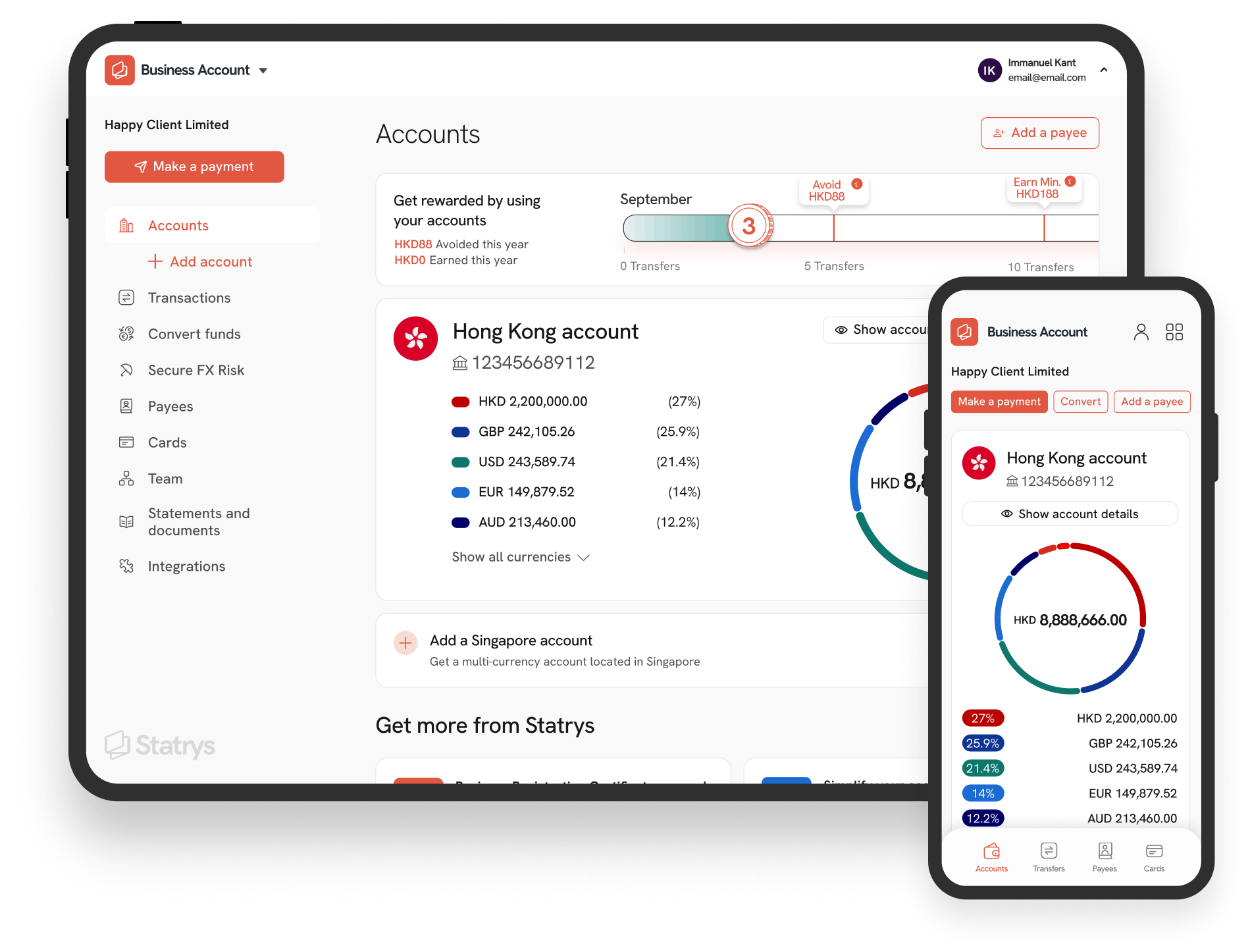Key Takeaways
Spot FX refers to the immediate exchange of one currency for another at the current market rate, known as the spot rate. It’s the simplest and most common type of foreign exchange (FX) transaction, typically settling within two business days.
If your business is starting to explore international markets, whether it’s sourcing from overseas suppliers or expanding into new regions, understanding how to exchange currencies efficiently is key. Spot FX, or spot foreign exchange, is the simplest way to convert one currency into another at today’s market rate.
It’s commonly used by businesses of all sizes to make fast, one-off payments without dealing with complex contracts or long-term commitments. This guide will walk you through what Spot FX is, how it works, and provide an example use case.

Tip: For a comparison between currency trading and other markets, check out our Forex vs Stock Market guide.
What Is Spot FX?
Spot FX is the most straightforward way to exchange one currency for another. It refers to a transaction where two parties agree to trade currencies at the current market rate, also known as the spot rate, with settlement usually completed within two business days.
Let’s say you run a business in Hong Kong and need to pay a supplier in Europe. You hold HKD, but the invoice is in euros. A spot FX trade lets you convert your HKD to EUR at today’s rate, ensuring the amount your supplier receives is accurate and timely.
Unlike more complex financial instruments, spot FX is designed for immediate needs. There's no upfront margin or long-term contract. It is just a quick, transparent exchange of currencies at market value.
Businesses commonly use spot FX to:
- Pay overseas suppliers
- Convert foreign revenue into their home currency
- Move funds across international accounts
- Cover last-minute or one-off payments
What makes spot FX so appealing is its speed and clarity: You see the rate, you confirm thetrade, and your currency is delivered within days. It’s a tool for any company dealing with cross-border payments, especially when timing matters.
How Spot FX Works
Here’s a step-by-step guide to how a typical spot FX transaction works:
- Identify the Need: Determine the amount and currency you need. E.g., a Hong Kong business needs EUR 50,000.
- Request a Quote: Obtain the current spot rate for the currency pair.
- Execute the Trade: Accept the quoted rate to lock it in.
- Trade Confirmation: Receive confirmation with settlement details.
- Settle the Trade: Funds are exchanged on the settlement date.
- Record the Transaction: Download your trading history for records.
Use Case: Wine Importer From Hong Kong
Here's an example scenario of how a Hong Kong wine importer can use Spot FX to pay a French supplier.
A Hong Kong-based wine importer receives a Bordeaux shipment from France. The invoice? EUR 50,000, due in just a few days. The company holds its funds in HKD and needs euros fast, without worrying about last-minute rate changes.
Instead of speculating on where the market might go next, the importer takes a practical route.
- They log in to Statrys, where they hold a multi-currency business account.
- They checked the live EUR/HKD exchange rate, currently at 8.50.
- They book a spot FX trade, converting HKD 425,000 into EUR 50,000 at the displayed rate.
- Statrys locks in the rate instantly, confirms the trade, and handles the rest.
The euros usually land in the supplier’s bank account on the same day. The importer avoids further exposure to currency movements and ensures timely payment, preserving both its profit margin and supplier relationship.
This real-world example highlights how spot FX offers speed, certainty, and simplicity, especially when time and exchange rates are critical.
Spot FX vs Forward FX
Spot FX is for immediate currency conversion. Forward FX is used to lock in a rate today for settlement on a future date.
| Feature | Spot FX | Forward FX |
|---|---|---|
| Settlement | Within 2 business days | Agreed future date |
| Rate | Current spot rate | Forward rate (derived from spot + interest differential) |
| Use Case | Immediate needs | Hedging future payments |
| Deposit | Not required | Usually required (e.g., 5%) |
Spot FX offers flexibility and immediacy, while Forward FX helps manage risk from future currency movements.

Tip: For more information, see our FAQ on Spot vs Forward Rate and our blog on Minimising FX Exposure.
Benefits of Spot FX
- Simplicity: Easy to understand and execute
- Speed: Lock in rates and settle in 1–2 days
- Liquidity: Access to a highly liquid market
- Transparency: Know the exact rate at execution
- No Commitment: No future obligations after settlement
Spot FX is particularly useful when responding to market opportunities or managing last-minute payments.
Risks and Considerations
- Exchange Rate Volatility: Rates can change quickly.
- No Hedging: Spot FX doesn't protect against future rate changes.
- Settlement Risk: Ensure funds are available for settlement.
- Operational Needs: Maintain proper records and payment schedules.
Businesses with predictable FX needs should consider using forward contracts to hedge against unfavourable movements.
Conclusion
Spot FX is the go-to solution for immediate foreign currency needs. It provides simplicity, speed, and flexibility without the commitment of long-term contracts. Whether you’re an SME, importer, or startup, understanding and using spot FX can enhance your international payment operations.
FAQs
What is Spot FX?
Spot FX refers to the immediate exchange of one currency for another at the current market rate, called the spot rate. It’s the most basic and widely used type of foreign exchange transaction, often used by businesses to cover urgent or one-off international payments. Settlement typically occurs within two business days.






